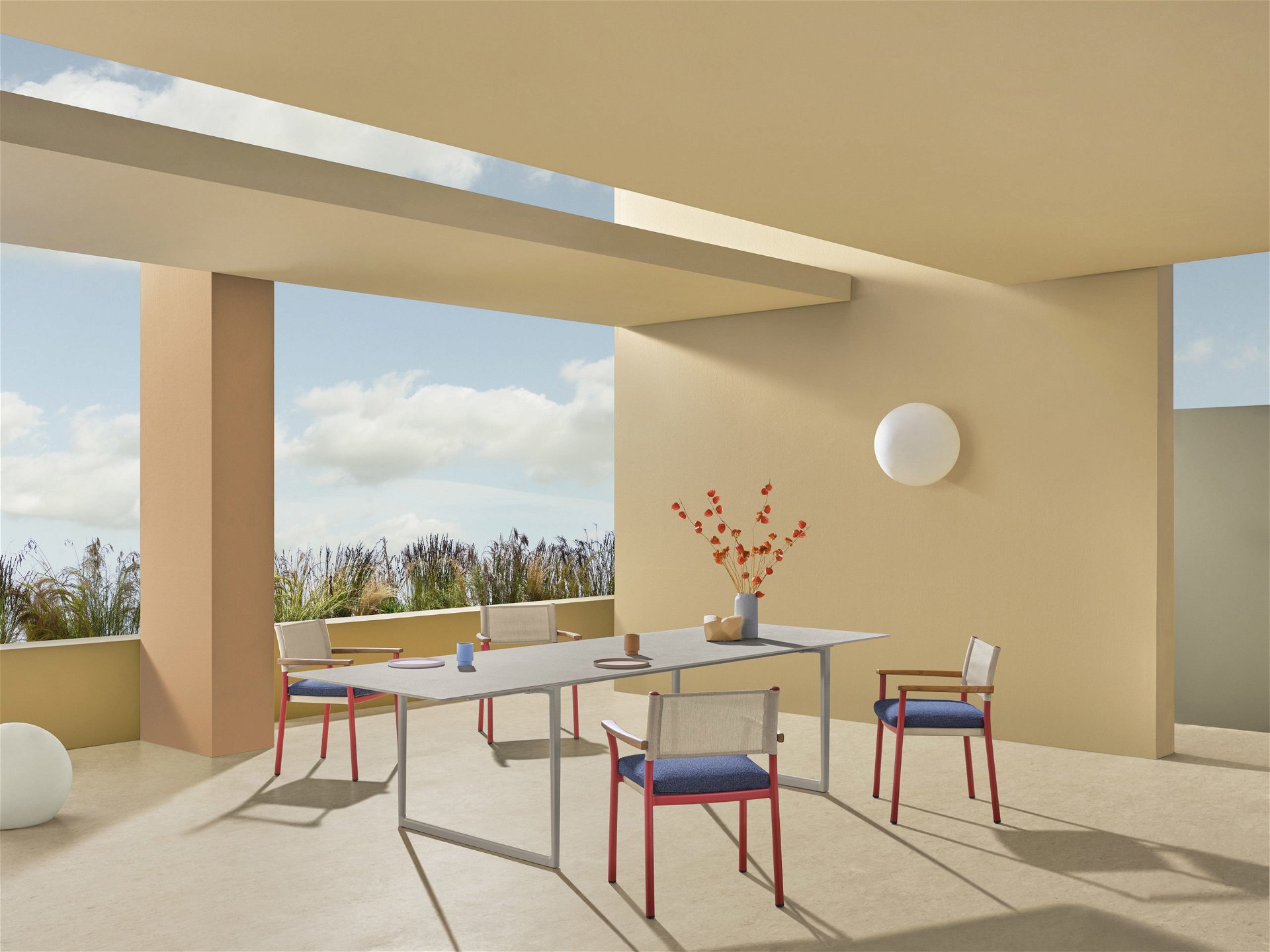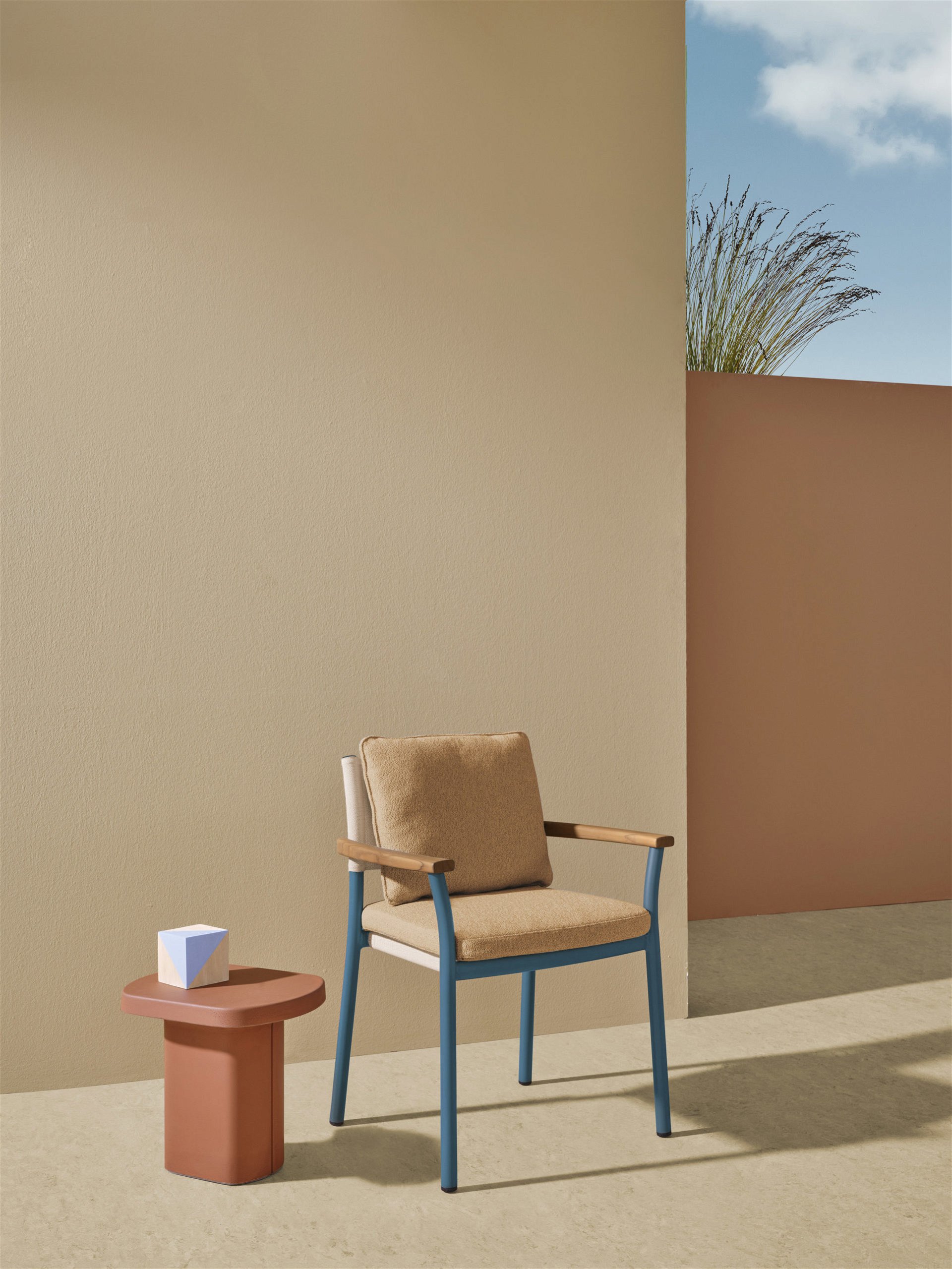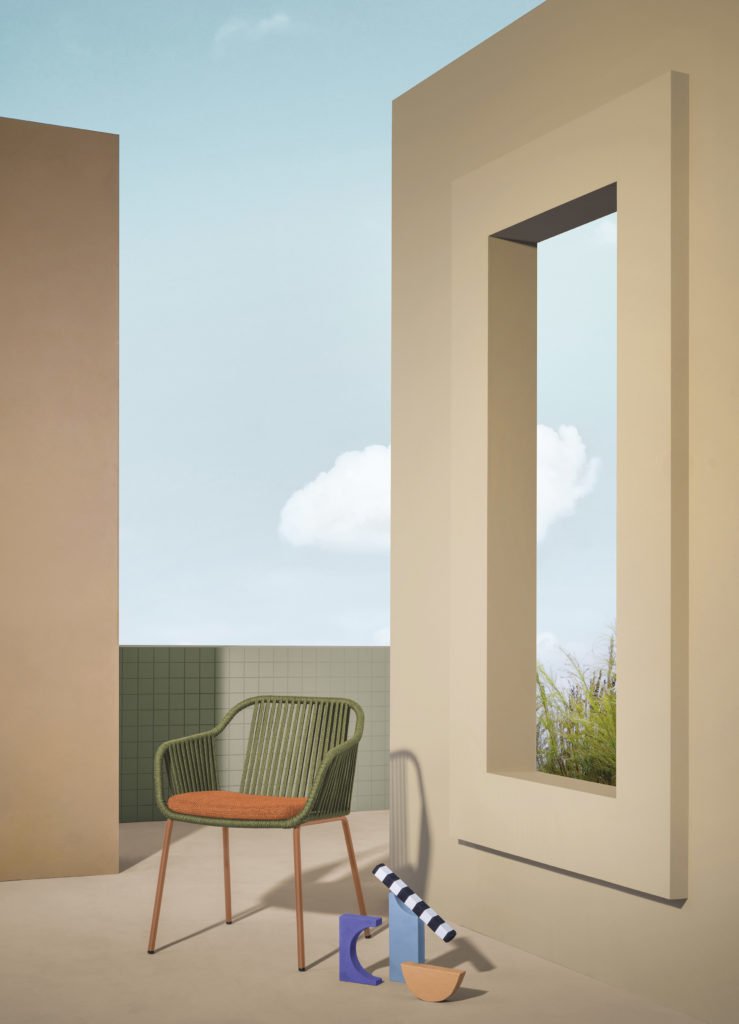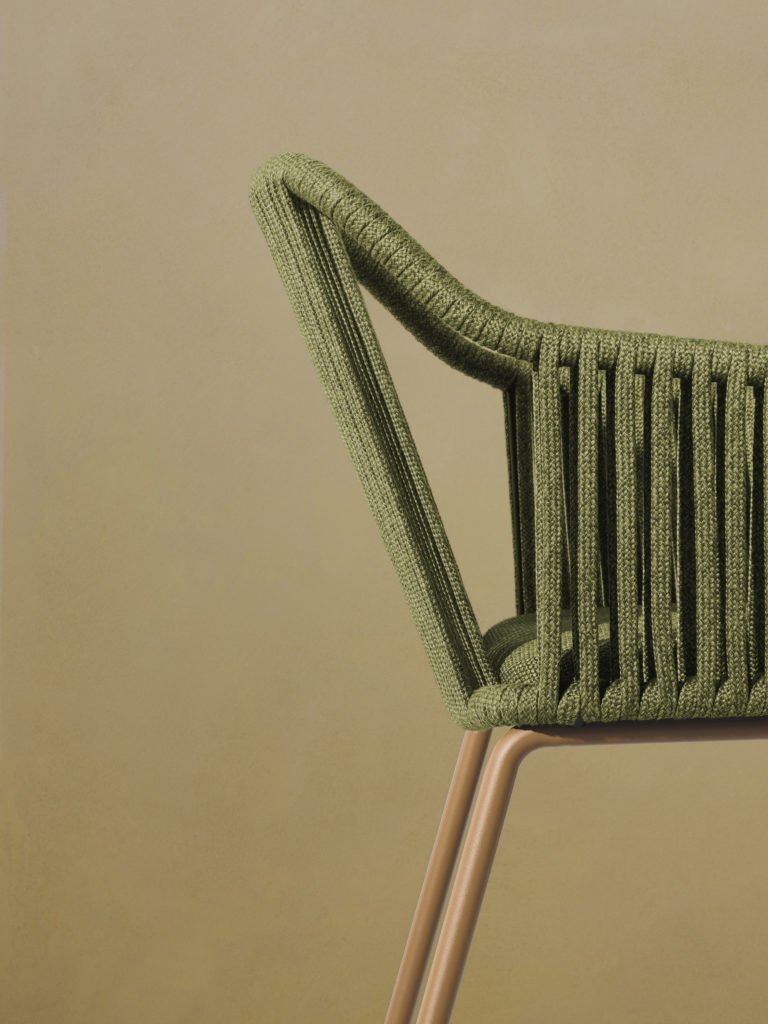Pedrali Staged at Maison&Objet 2024
The Italian company renews its presence at the Parisian event
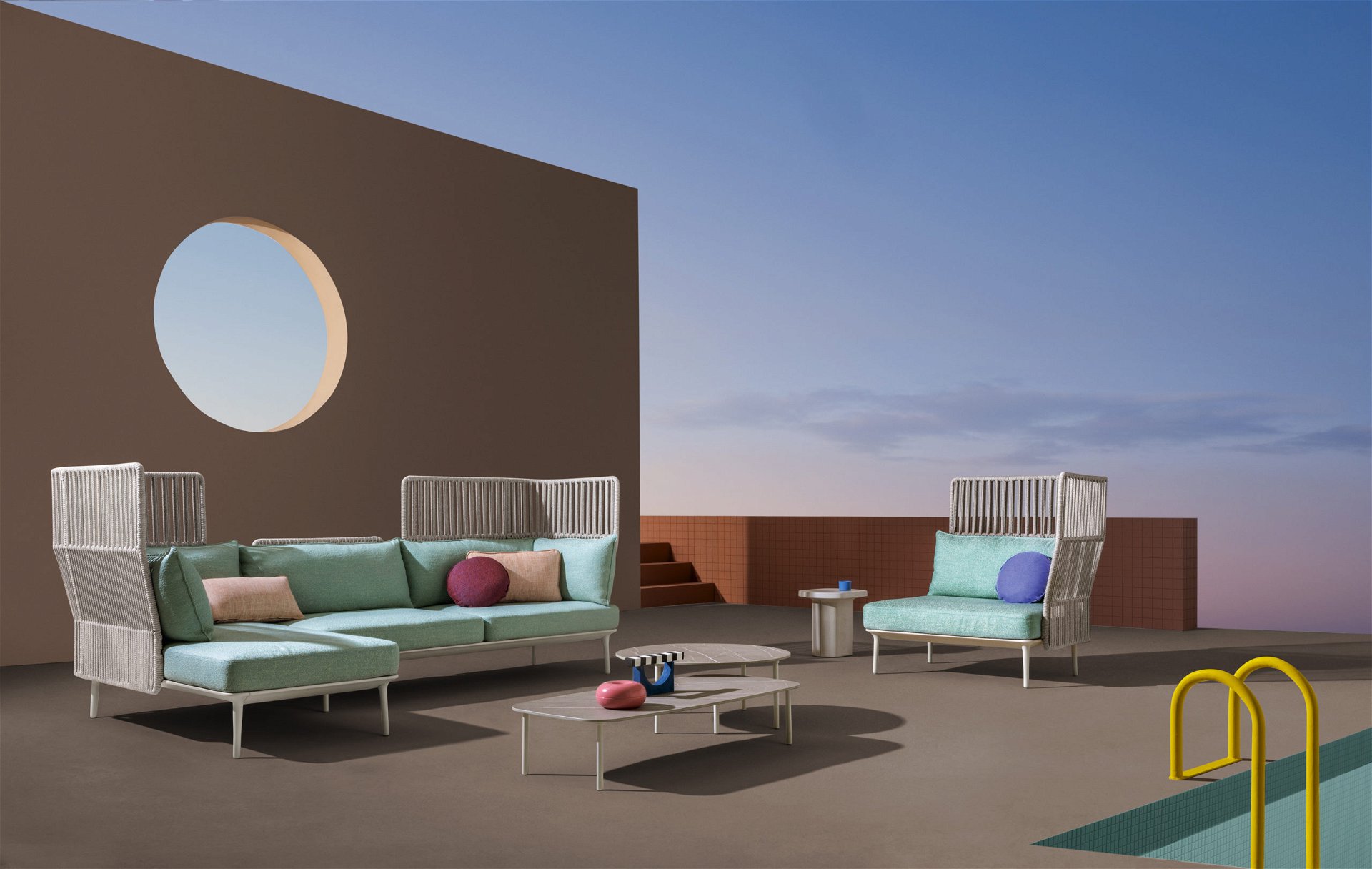
From 18 to 22 January Pedrali takes part in the 30th edition of Maison&Objet in Paris, the international event for retail, residential and hospitality professionals. Now in its 13th participation, the Italian company will attend the fair with a booth – #PedraliBacktoNature – designed by the Milan-based DWA Design Studio located in Hall 6 (stand G2 H1) within Today, the section dedicated to the interior design that combines originality and innovation.
Maison&Objet, through the theme Tech Eden, will guide exhibitors and visitors along a path aimed at exploring the competition between human intelligence and nature in designing the near future. Spaces will be reinterpreted with a technological and sustainable perspective, and areas dedicated to retail and residential purposes will transform to offer new solutions for a future increasingly focused on the environment.
#PedraliBacktoNature evokes the origins of Pedrali, which started with the outdoor collections and has evolved over the years to include indoor products, expressed through a fluid set-up in which the interior and exterior follow one another, one becoming the extension of the other. The emerging environment, which is homogeneous and differentiated at the same time, is a soft and welcoming space, where spontaneous but designed nature becomes the distinguishing feature that defines and gives meaning to the space. Nature, typically conceived in the outdoor environments, is integrated here with the indoors, becoming an architectural theme. Conversely, the outdoor spaces are imagined with the same level of care reserved for the indoor ones, in a continuous mixture of the surroundings.
Pedrali welcomes its visitors in a 135 sqm area, where three different scenes come to life, each developed on a raised platform. The collections are displayed through a set-up designed as a geometric volume in which each room is characterised by its own volumetry and defined by natural earth tones such as beige and sand. A neutral palette that allows the products to be emphasised, presented in more intense and bolder colours.
In order to pursue the sustainable philosophy that has always guided the company, the same architectural elements that characterised the neutral volumes of the stand at the last edition of the Salone del Mobile.Milano were reused. With a view of environmental commitment, raw materials were chosen to enable the booth to be disassembled or correctly disposed of by differentiating the various components.
Decorative elements belonging to the “Unico” collection made by DWA Design Studio embellish the space. The architects, after observing the processing waste obtained during the moulding of Pedrali chairs, had the intuition to recognize the potential of waste material and gave life to always different pieces of unique value through a combination in which reuse blends with craftsmanship.
The first setting features Guinea, by CMP Design, an outdoor armchair with an iconic allure that evokes the concept of lightness and transparency. The large, embracing aluminium frame combines with a seat in waterproof textile mesh on which rests a soft, removable cushion. The waterproof textile mesh backrest is reminiscent of the traditional director’s chairs, with an enhanced sense of visual lightness. The hallmark of Guinea is its teak armrests, which fit into the aluminium frame by introducing a vivid, tactile detail that mitigates heat and cold temperatures. A durable tropical wood that the designers wanted to preserve through a moderate use, FSC® C114358 certified and treated with water-based oil. Guinea armrests, seat and backrest are assembled mechanically, making them easy to disassemble for recycling purposes or to replace its components. Within this space, Guinea also finds its natural place in the version with the backrest in aluminium slats covered in fabric with a turquoise hue. The armchairs are placed around the Toa table, designed by Robin Rizzini, which combines a technical-industrial style with decorative allure, giving life to a functional and evocative product. Lightweight and minimalist, Toa is characterised by a solid die-cast aluminium frame. The main features are its tapered bridge legs made of die-cast aluminium, which are thinner at the base and widen up towards the “T” element that supports the top.
Anemos table, designed by Pio & Tito Toso, is the protagonist of the second set that ideally represents an outdoor patio: a hybrid space that emphasises the concept of the permeability of outdoor and indoor spaces. Anemos is a table characterised by simple and architectural shapes. The distinctive feature is the base, composed by two separate concrete shells secured to the top. Like a structural membrane, these elements free themselves from their image of intrinsic weight and, through a double curvature, take on a flexible and sinuous shape. The result is a table that seems sculpted by the wind, visually light yet stable and solid due to its significant weight, capable of supporting large tops. The matt and slightly shaded surface of the concrete, clay-coloured on this occasion, enhances the materiality of the base. Surrounding Anemos are the Babila Twist by Odo Fioravanti, steel armchairs characterised by a large and welcoming shell woven with a flat rope in weather-resistant polypropylene. Babila Twist’s distinguishing feature is the combination of a woven body and a tubular steel frame with slats for the seat. These are screwed, making them easy to disassemble and recycle. A comfortable cushion made from dry-feel polyurethane foam that dries quickly, is covered in fabric for outdoor use.
The third setting stages Lamorisse Wood by CMP Design, whose main feature is the contrast between the sober shape of the supporting structure and the use of a large and enveloping cushion. The ash frame is characterised by oval shaped legs that blend with rounded steam-curved armrests and increase slightly in thickness near the joints for added strength, accommodating an extremely soft, generous and embracing cushion. A thin metal frame supports the seat. Elastic belts and non-deformable polyurethane foam guarantee a high level of comfort. The lining of the soft, wrap-around backrest is removable and joined to the seat by means of a zip. A hard leather strap secures the backrest to the frame. Lamorisse Wood is made using 100% certified FSC® C114358 wood and finished with water-based coatings composed mostly of plant-derived resins. Taking centre stage, with a terracotta-coloured fenix top, is Frank by Robin Rizzini, a table inspired by architectural shapes and industrial materials. Together, rational lines and curves contribute to conveying an image of lightness and contemporaneity. The structure on which the top rests is made up of two slightly curved die-cast aluminium bases with variable thickness, the perception of which varies according to the point of view. Seen from the front they are slightly arched and resemble the shape of a sail, creating a light and ethereal optical effect. Seen from the side, the volume appears full. The bases taper towards the bottom, reaching the ground in a less accentuated curve and are connected by a sturdy steel beam, placed under the top. The elegant and majestic presence of ten Isotta pendant lamps by Basaglia Rota Nodari, positioned above the table, enhances the setting.



The three sets are completed by the wireless Giravolta lamps by Basaglia Rota Nodari, in the new version characterised by a touch control and three light intensities, and the Hevea pot-holder in the special full-height version. Hevea is a versatile furnishing accessory, designed by Victoria Azadinho Bocconi, conceived to bring nature inside.




Two lounge areas, one inspired by an open-air living room and the other by a comfortable indoor setting, enrich the booth. Reva Cocoon by Patrick Jouin, a system of lounge seats for outdoor use, welcomes visitors in the first scene: sofas with an aluminium frame composed of linear, corner and chaise longue elements, with striking stainless steel backrests woven with weather-resistant polypropylene rope.
The feeling of envelopment is enhanced by the soft cushions that rest on the structure, which, following Pedrali sustainable philosphy, are made from recycled material: produced from 70% recycled polyester fibre, obtained by post-consumer reuse of white polyester containers. With its generous sizes and the high backrests, Reva Cocoon creates a space within the space, offering protection and shelter from the outside world for those seeking a moment of relaxation and escape.
The cord element, 100% made in Italy by expert craftsmen, offers vital privacy, while keeping the piece of furniture airy and allowing for plays of light and shadow using a thicker weave in the lower part and a looser one in the upper section, with the aim of bringing the same quality and care to the outdoors as to indoor furniture. Great care is taken in the choice of materials, which must guarantee resistance to different weather conditions, easy cleaning and durability. The relaxing atmosphere is accentuated by the comfort of the Panarea lounge designed by CMP Design. The idea behind Panarea is rooted in the Mediterranean coastline, and in the colours and refreshing breeze of an outdoor night on a sea-facing terrace. A lounge armchair featuring a traditional element in polypropylene cord hand-woven in Italy that wraps around the steel tube frame. A comfortable cushion in dry-feel polyurethane foam that dries quickly and covered in fabric made from the same yarn used for the woven element rests on the seat. The scene also includes Buddy coffee table by Busetti Garuti Redaelli which, thanks to their friendly and versatile character can complete the interiors of every environment. The iconic wireless rechargeable Giravolta lamps, by Basaglia Rota Nodari, harmoniously fit into the setting.


At the opposite end of the booth is the second lounge area featuring Jeff, the modular and customisable sofa system designed by Patrick Norguet. Jeff is designed as a set of miniature architectures, skilfully combined to create multiple modular and reconfigurable scenarios. The distinguishing feature of Jeff is its harmony of volumes: the squared backrest pairs with a delicate seat to soften and give balance to the whole structure.
Each module is made from a highly comfortable and non-deformable polyurethane foam, resting on a plywood platform. The result is exceptionally soft, comfortable sofa in which organically-shaped seats subtly contrast with the more geometric and rigorous shapes of the backrest and armrests. Comfort, softness and sensuality are expressed by the Ila armchair designed by Patrick Jouin. Its curved, flexible lines trace out a comfortable and enveloping silhouette. The armchair features an outer shell in rigid polyurethane foam and flexible polyurethane foam for the inner shell, as well as a swivelling central steel base in the shape of a cone section. The large headrest adds character to the armchair. The scene also includes single-piece concrete table Caementum, designed by Marco Merendi & Diego Vencato, where the dye is mixed into the concrete with natural oxides that guarantee an unchanged appearance over time. Also featured in this area is Hevea Partition, a furnishing element designed by Victoria Azadinho Bocconi, a three-column pot-holder that creates green walls and layouts, bringing nature indoors. The pots are easy to attach, either opposite one another or in a spiral. The Hevea elements fasten mechanically and are therefore easily separable for cleaning purposes. The different components can be disposed of correctly at the end of their life cycle.


An area for discussion and dialogue takes place around Blume table by Sebastian Herkner, echoing the fine lines of the family, whose distinctive force emerges from the column in extruded aluminium with a sophisticated flower-shaped profile featuring along its entire height, for a unique style. Narì armchair by Andrea Pedrali, with its honey-coloured frame and woven element with contrasting yellow cushions, embellishes the scene. The armchair echoes some of the elements of the first forged iron garden chairs from Pedrali’s 1960s collection, in a contemporary key. Narì has a solid steel structure and a weather-resistant woven in extruded PVC with a nylon core wrapped around the armrests and backrest. This woven element, created in Italy by expert craftsmen, tightens towards the lower part of the seat and widens towards the top, calling to mind the fan-shaped geometry inspired by the backrest of the Serenella armchair. The seat and backrest accommodate a comfortable polyurethane foam cushion consisting of two sections joined by a zip and resting on the seat with steel slats. The legs are characterised by double steel tube that features a simple and linear shape.



About Pedrali Pedrali is an Italian company that produces contemporary furniture for contract and residential. The industrially designed, functional and versatile collections are the result of a process that combines tradition, innovation and engineering excellence. Entirely developed in Italy, they are made of metal, plastic material, wood and upholstery, also in combination with each other. Pedrali's products are the result of synergic collaboration with Italian and international designers who, with their invaluable contribution, make it possible to obtain important awards. The most prestigious in 2011: the XXII Compasso d'Oro ADI for the Frida chair, designed by Odo Fioravanti. The 100% Made in Italy philosophy becomes real through the internal production in the Headquarters of Mornico al Serio (Bergamo), where the automated warehouse designed by Cino Zucchi-CZA Cino Zucchi Architetti is based, and in the wooden manufacturing in Manzano (Udine). The high quality and respect for the environment represent long-established practices for Pedrali.

